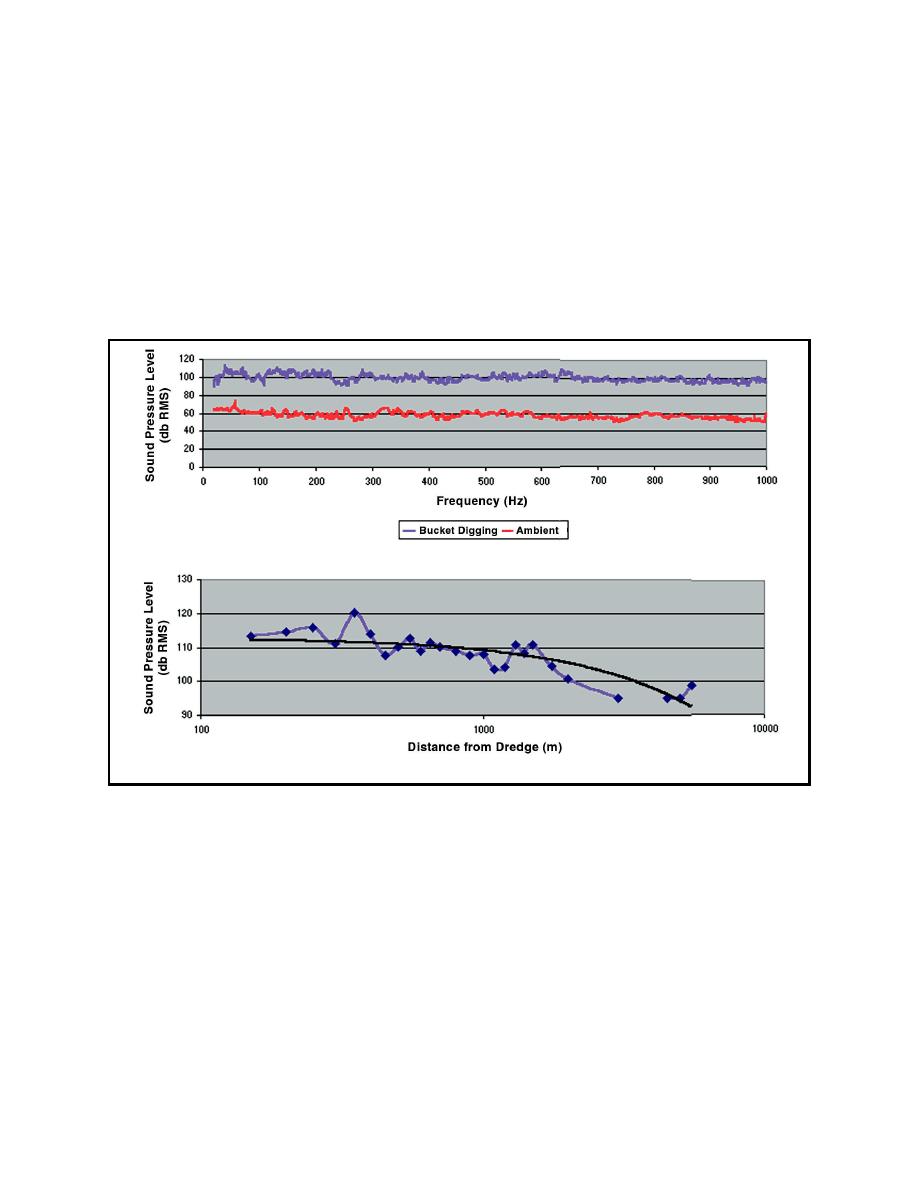 |
||
|
|
||
|
Page Title:
Figure 5. Sound pressure level produced by dredge bucket digging into coarse sediment as measured over ambient conditions and... |
||
| |||||||||||||||
|
|
 ERDC TN-DOER-E14
August 2001
in Figure 5. At the 150-m listening station, peak SPL was measured at 113.2 dB re 1 Pa-m at a
peak frequency of 40.4 Hz, or 40 dB re 1 Pa-m above peak ambient conditions. However, a
maximum reading of 122.3 dB re 1 Pa-m was recorded at the 600-m listening station. This may
have resulted from the bucket grabbing into a patch of harder gravel substrate at this listening station.
Peak intensity for this event, measured at the 150-m listening station, was 10.8 dB lower than that
recorded for the bucket striking the bottom event.
Figure 5 illustrates the attenuation of SPL produced by the digging event with increasing distance
from the sound source. The plot shows a decrease in SPL (18 dB) from 113 dB re 1 Pa-m (150 m)
to a low of 94.97 dB re 1 Pa-m at the 5,000-m range.
a. Ambient conditions
b. Attenuation with distance from the point source
Figure 5. Sound pressure level produced by dredge bucket digging into coarse sediment as measured
over ambient conditions and its attenuation with distance from the point source in Cook Inlet,
Alaska
Bucket Closing: This event occurs when the jaws of the bucket close against each other. In
contrast to other dredging events, bucket closing does not always produce an audible sound as noted
in Table 2. Figure 6 illustrates the SPL (dB) generated during a dredge bucket closing event
compared with ambient conditions. In general, this event produced the least intense sounds. At the
150-m listening station, SPL was measured at 99.25 dB re 1 Pa-m at a peak frequency of 316.3 Hz, or
26 dB re 1 Pa-m above peak ambient conditions. In comparison with other dredging events
recorded at the 150-m listening station, SPLs for bucket closing were on average 9 dB re 1 Pa-m
lower than barge loading events and 25 dB re 1 Pa-m lower than bucket striking the bottom events.
Peak SPL generated during bucket closing occurred at much higher peak frequencies (as high as
11
|
|
Privacy Statement - Press Release - Copyright Information. - Contact Us - Support Integrated Publishing |